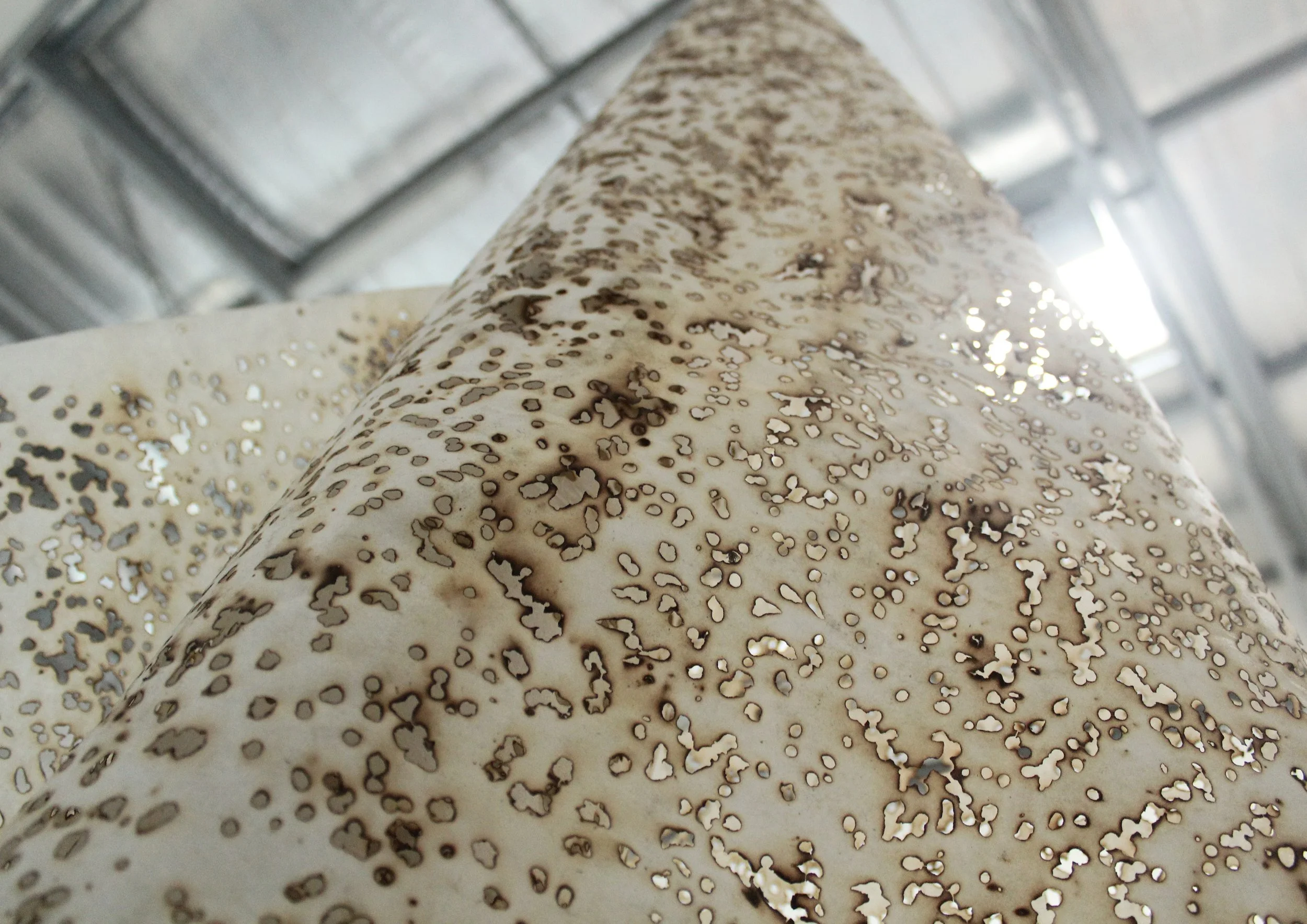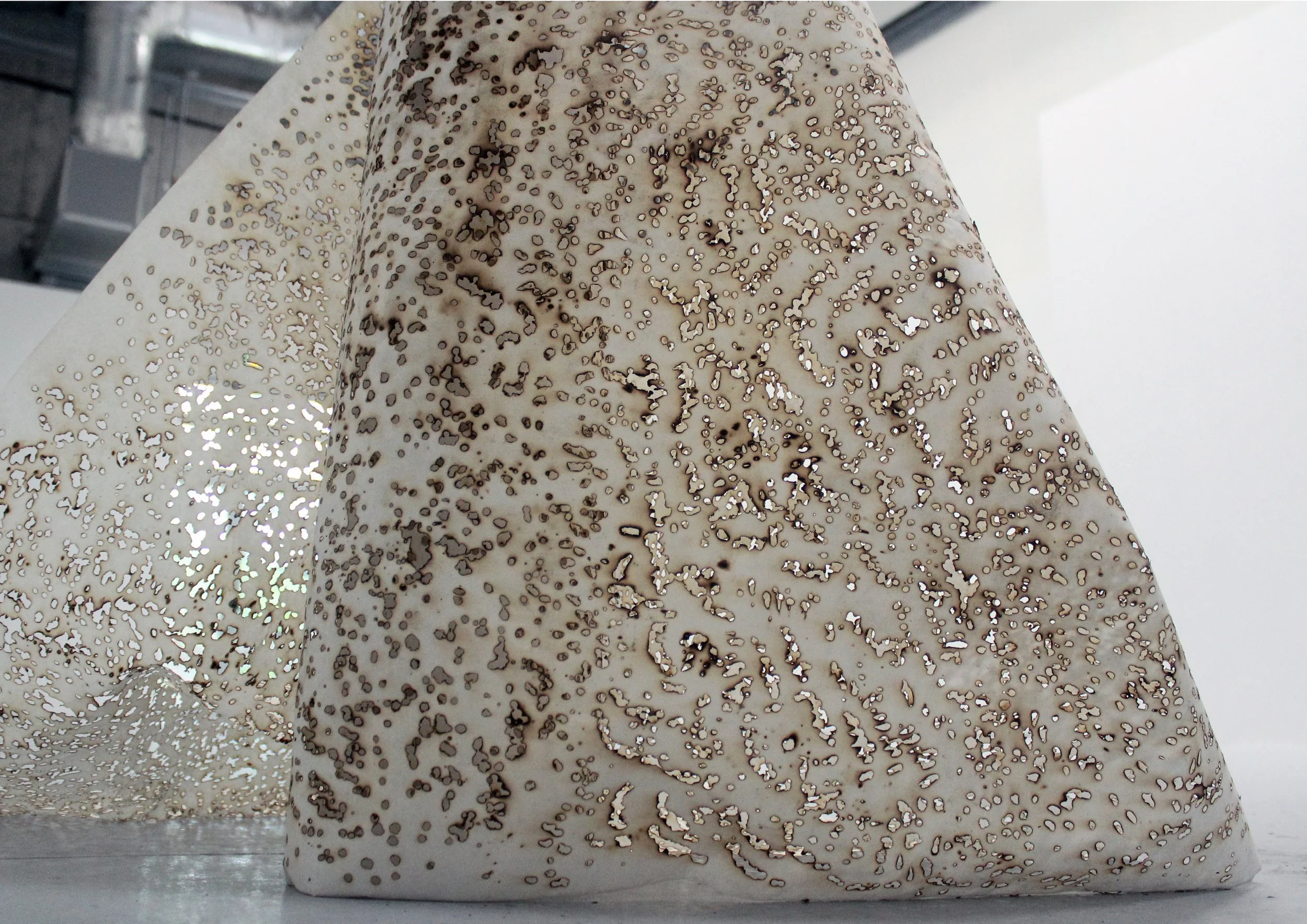The Cartography of Burnt Emptiness
This roll of rice paper, burned hole by hole with incense, looks like a body slowly eroded by time.
Each dark-edged opening is a mark left by withdrawing consciousness, an absence that insists on being seen.
Something once full becomes emptied; something meant to be empty grows dense with traces.
The incense behaves like an unconscious hand, drawing a path that even you cannot foresee.
You let the material be altered, and yet a silent order emerges.
The spacing between the holes forms a geometry of fate, a map of the invisible, echoing both the architecture of awareness and the inner logic of time.
Unrolled on the floor, the paper reads like a materialized memory:
the outer layers are exposed, explicit, legible;
the inner layers coil into secrecy, holding resonances no one can access.
Fullness is not possession;
it is the sedimentation of time.
Emptiness is not lack;
it is the permission for light to pass.
Across these thousands of burned apertures,
existence is affirmed and undone repeatedly.
The more the material is hollowed,
the more complete it becomes.



